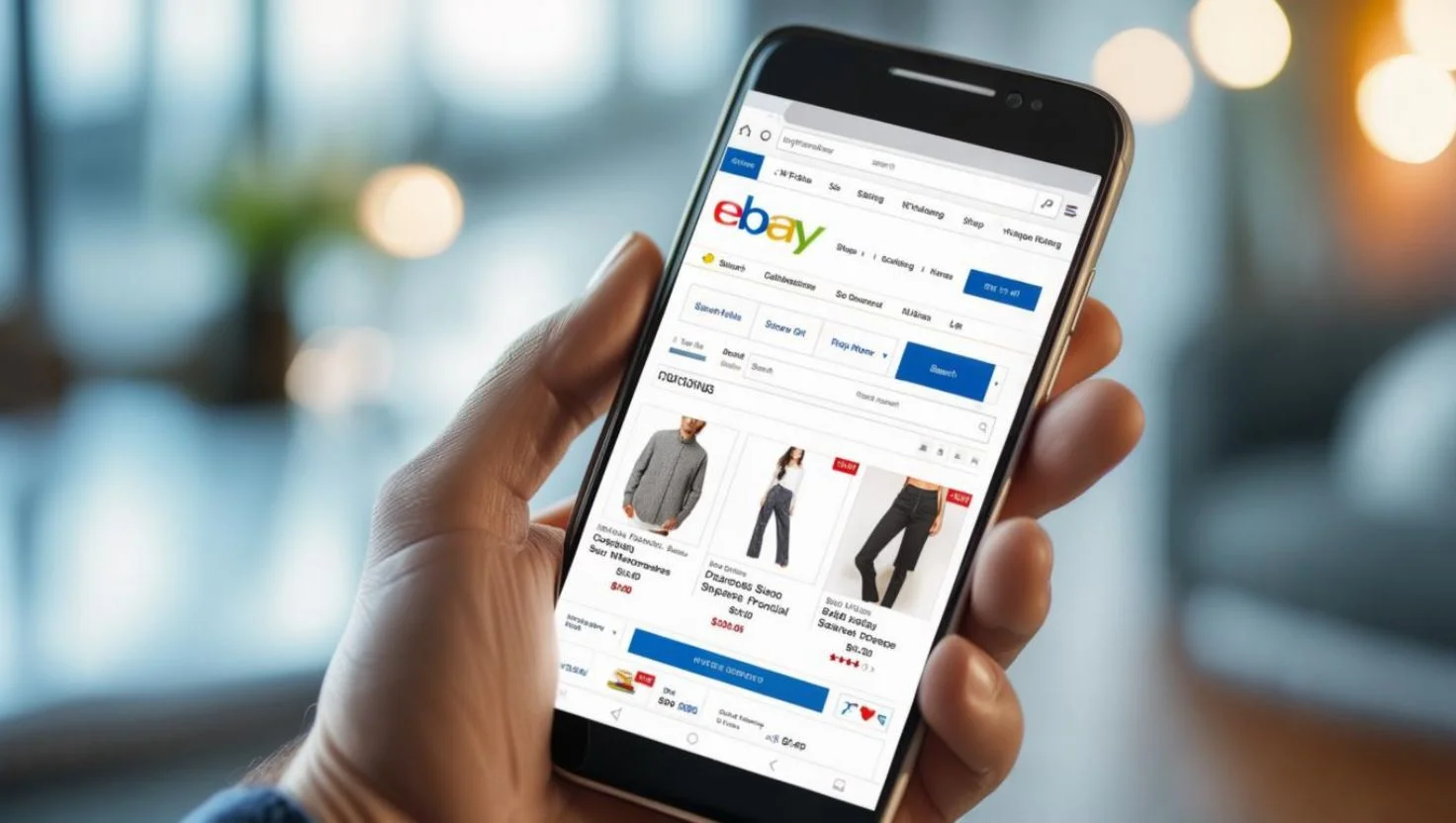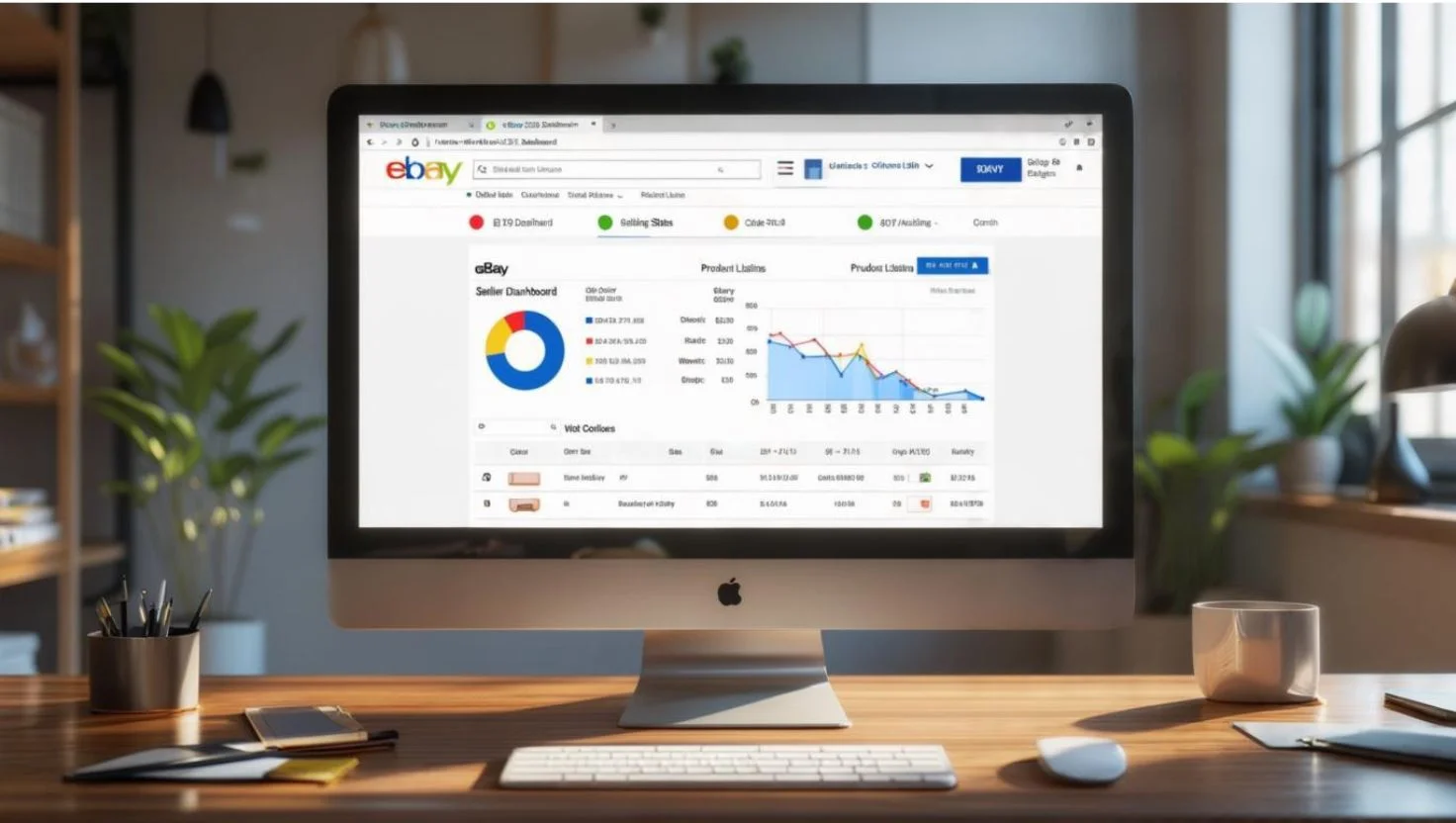Table of Contents
- Early Days: AuctionWeb (1995–1997)
- The Birth of “eBay” and Rapid Growth (1997–1999)
- Expanding Services: Fixed-Price Listings and eBay Motors (1999–2005)
- Tech Boom, Dot-Com Bust, and Splits (2000–2015)
- Web Design Evolution and “eBay Evo” (2005–2024)
- AI, NFTs & Mobile-First Strategy (2020–Present)
- Trust, Community, and Legal Challenges
- Factors Behind eBay’s Longevity and Success
- What the Future Might Bring?
- Conclusion
When you think of online auctions, eBay is often the first name that comes to mind. What began as a small side project turned into a worldwide marketplace worth billions of dollars. Today, we’ll walk through how the eBay official website began, changed, and evolved over the years, all in simple terms.
Early Days: AuctionWeb (1995–1997)
In September 1995, Pierre Omidyar, a programmer in California, made a website called AuctionWeb. It lets people sell items and others bid on them. The first thing sold was a broken laser pointer for $14.83. The buyer collected the broken ones.
The website grew faster than Pierre Omidyar had imagined. People started selling all kinds of things, collectibles, and everyday items, and more and more buyers joined in. As the site became more popular, the traffic increased so much that his internet provider made him switch to a business account. To keep the site running, he began charging small fees to users.
As the website kept growing, Pierre Omidyar hired his first employee, Chris Agarpao, to help with the increasing work and daily tasks.
The Birth of “eBay” and Rapid Growth (1997–1999)
By May 1997, AuctionWeb became very popular and was renamed eBay, taken from Pierre Omidyar’s consulting business. He wanted the name “echobay.com,” but since it was already taken, he shortened it to “eBay.” Around that time, investors like Benchmark gave funding to help the company grow.
Some key events during this time:
- In 1997, eBay added a feedback system so buyers and sellers could rate each other. That same year, it sold its one-millionth item, a Big Bird jack-in-the-box.
- 1998, Meg Whitman became CEO and helped eBay prepare to go public.
- September 1998: eBay launched on the NASDAQ stock market with shares priced at $18 but closed much higher on the first day.
- 1999, eBay started growing internationally, expanding to countries like Germany, the UK, and Australia.
From simple auctions to a fast-growing marketplace, eBay was establishing its reputation in the dot‑com era.
Expanding Services: Fixed-Price Listings and eBay Motors (1999–2005)
Between 1999 and 2005, as eBay grew, it started offering more features and services:
- eBay added the “Buy It Now” feature so people could buy items instantly.
- In 2000, it started eBay Motors was started for cars and auto parts.
- In 2002, eBay bought PayPal for $1.5 billion to make payments safer and easier.
- From 2002 to 2005, eBay also bought other companies like Skype, Half.com, Shopping.com, and Rent.com to offer more services.
These changes helped eBay build a stronger platform by bringing together shopping, payments, and extra tools all in one place.
Tech Boom, Dot-Com Bust, and Splits (2000–2015)
eBay managed to get through the dot-com crash because it earned steady income from auction fees, unlike many companies that relied only on ads. PayPal became the main way to pay on eBay, handling about 70% of all transactions on the site. Later, eBay sold off some of the companies it had bought:
- Skype was sold in 2009.
- Other platforms like Rent.com, Gumtree, and StubHub were also sold during the 2010s.
In 2015, eBay separated from PayPal, making it a standalone company, so both businesses could grow on their own. This time marked a shift in eBay’s strategy, focusing more on online shopping, making its services simpler, and improving the user experience.
Web Design Evolution and “eBay Evo” (2005–2024)
As eBay improved its technology, the look of the website also changed:
- The first logo from 1995, which looked pixelated and basic, was replaced in 1999 with a more colorful and modern design.
- The website layout also improved over time. It went from simple auction listings to offering many categories, mobile apps, and personalized user dashboards.
- In 2024, eBay introduced “eBay Evo,” a major redesign that brought a cleaner look, better accessibility, and a consistent style across phones, tablets, and computers.
These changes show how eBay continues to update its design to match modern trends and improve the shopping experience for users.
AI, NFTs & Mobile-First Strategy (2020–Present)
In recent years, eBay has started using new technology to keep up with the changing e-commerce world:
- In the 2010s, eBay made mobile apps a big focus, so people could easily buy and sell items from their phones.
- In 2021, eBay began allowing NFT listings, and in 2022, it bought an NFT platform called KnownOrigin.
- Between 2023 and 2025, eBay added AI tools, like “magical listings” that help sellers by creating product details from photos. AI made search better and helped give users more personalized shopping results.
Jamie Iannone became CEO in 2020 and has led the way in using AI and upgrading mobile and online shopping features.

These changes show that eBay is working hard to stay modern by focusing on AI, digital assets, and mobile-first design.
Trust, Community, and Legal Challenges
As eBay grew, it also faced some tough challenges:
- In the 2000s, it dealt with problems like fake products, especially in Europe, which led to lawsuits.
- In 2014, eBay had a big data breach that exposed the personal information of millions of users.
- Some sellers used dishonest methods like shill bidding (bidding on their own items to raise prices), which forced eBay to create stricter rules.
- In 1999, eBay went to court over a case of web scraping by a company called Bidder’s Edge, which helped set new rules about website data and online rights.
Even with these issues, eBay took steps to build trust. It added features like buyer and seller feedback, eBay Authenticate to check item authenticity, and eBay University to help sellers learn and improve.
Factors Behind eBay’s Longevity and Success
- Building Trust Features like seller feedback and item authentication helped make eBay a safer place to shop.
- Global Growth eBay became international by creating local versions of the site and offering worldwide shipping.
- Easy Payments, adding PayPal, made buying and selling much simpler and more secure.
- Technology Upgrades eBay kept improving with mobile apps, AI tools, better user experience, and even NFT support.
- Modern Look Redesigns like “eBay Evo” helped keep the site fresh, easy to use, and up to date.

What the Future Might Bring?
- Enhanced AI and personalization: Expect smarter product suggestions, AI editing of listings, and voice search features.
- Further use of NFTs and blockchain: Digital collectibles and verifiable ownership systems might grow.
- Mobile-first commerce evolution: Live shopping, AR previews, and instant checkout could take center stage.
- Sustainable marketplace practices: New features to support eco‑friendly resale and carbon-conscious deliveries.
From its start as a side‑project named AuctionWeb in 1995 to today’s global, tech-driven platform, eBay’s official website has evolved dramatically. It pioneered online auctions, weathered a tech bubble, reinvented commerce with PayPal, and embraced mobile and AI. While tackling legal and trust challenges, eBay has kept its focus on community, technology, and adaptability, helping it stay a top marketplace for over 30 years.
Conclusion
The History and Evolution of the eBay Official Website is a story of steady innovation and resilience. It started small, grew quickly, and kept changing with the times. eBay saw value in trust, community, and technology early on. From auctions to AI tools, it stayed relevant by reinventing itself. The new “Evo” design and AI are proof that eBay plans to stay around for many more years. With its rich history and forward-looking initiatives, this site continues to shape e-commerce, one evolution at a time.









